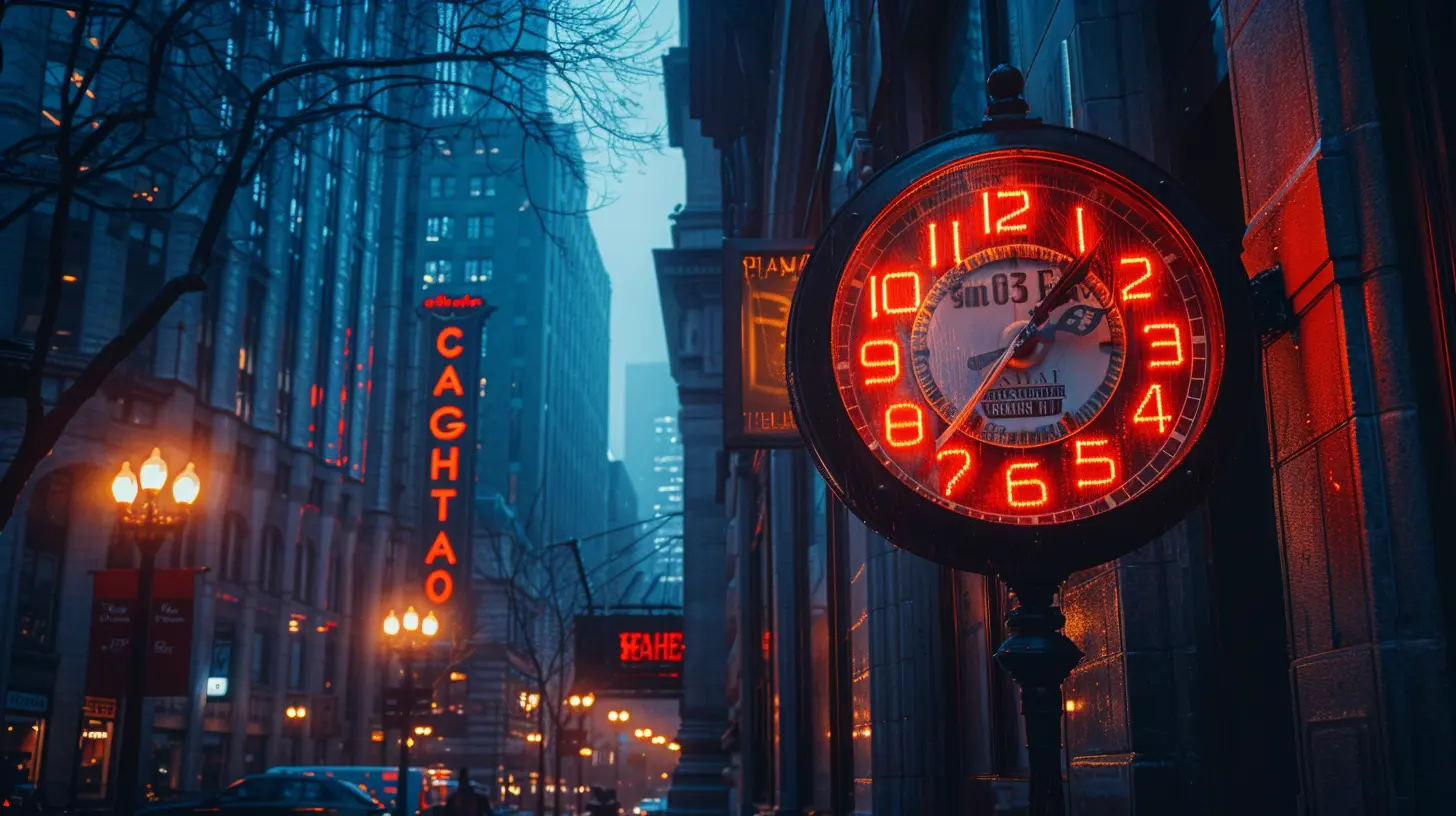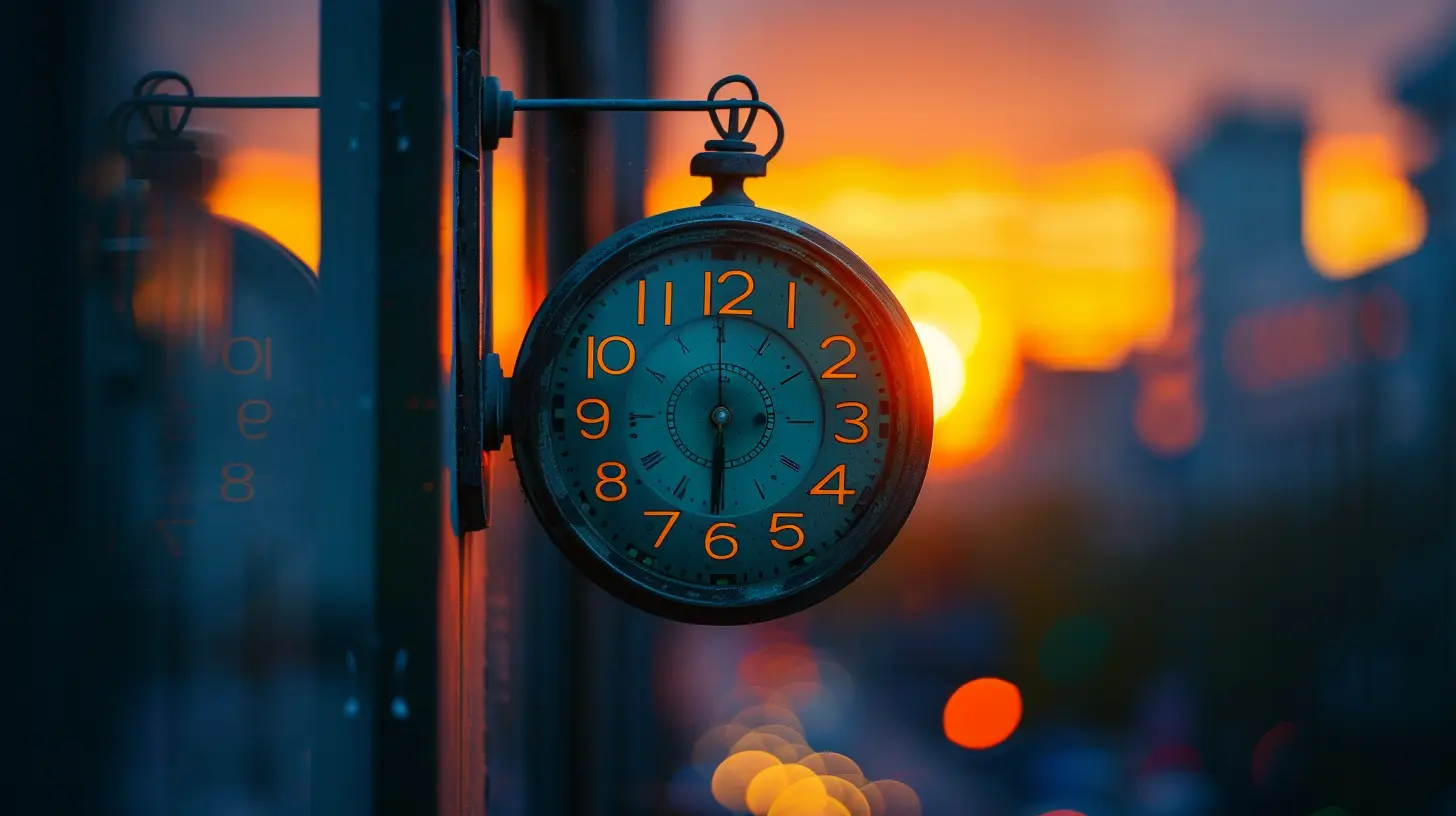The Best Time of Day to Execute Day Trades
20 August 2025
If you're dabbling in the world of day trading, you've probably asked yourself, "When’s the best time to actually buy or sell my trades?" It’s a crucial question – almost like asking when is the best time to cast your fishing line. You can have the best bait (or in our case, strategy), but cast it at the wrong time, and you’ll come up empty.
Timing matters. Big time.
In this post, we’re diving deep into when the markets are most active and when traders like you should be glued to your screen – and when you should maybe grab yourself a coffee instead. Whether you’re a newbie trying not to get burned or a seasoned trader looking to sharpen your edge, this guide has got you covered.
Why Timing Is Everything in Day Trading
Before we dig into when to trade, let’s clarify why timing is so vital in day trading.Day trading is all about short-term opportunities. You're in and out of positions within minutes or hours. In this game, you rely on volatility – those rapid shifts in prices caused by news, emotion, and good ol’ supply and demand. But here’s the catch: volatility doesn’t spread itself evenly throughout the day.
Think of the stock market like your local gym. Early in the morning, it’s buzzing—folks sprinting on the treadmill, lifting weights, full of energy. Midday? A ghost town. Late afternoon? It picks up again before closing. The markets have the same rhythm. The trick is knowing when to "work out" and when to rest.
The Opening Bell: 9:30 AM to 10:30 AM EST – The Power Hour
This is where the real fireworks happen.Right after the market opens at 9:30 AM EST, everything is moving fast. Stocks are reacting to overnight news, pre-market trading, earnings reports, and economic data. Everyone – and I mean everyone – is trying to establish their positions. This is easily the most volatile hour of the trading day.
And for day traders, volatility = opportunity.
Benefits of the Opening Hour
- High Volatility: Perfect for quick profits if you know what you’re doing.- Heavy Volume: More transactions mean it's easier to get in and out of trades.
- Sharp Moves: Swing highs and lows can be identified quickly for scalping or momentum plays.
But hold on—volatility is a double-edged sword. It's like driving a sports car. Super fun if you're trained. Dangerous if you're not.
If you're new to the game, the opening hour might feel like chaos. Spreads can get wide. Prices can jump seconds after your entry. So newbies might want to paper trade or observe during this period before diving in with real cash.
Late Morning: 10:30 AM to 12:00 PM EST – The Slowdown
After the morning frenzy calms down, the market tends to take a breather. That wild energy from the first hour? It starts to fade. Traders start reassessing their positions. Volume drops. And price action becomes... meh.But here’s the thing: this period can still be useful.
How to Trade This Period
- Look for Confirmed Trends: By now, the market might have chosen a direction. If a stock continues upward after the initial rush, it could mean a trend is forming.- Look for Reversals: Some traders use this period to spot "fake outs" from the morning and play reversals.
- Scalp Lightly: Smaller, more predictable moves can be good for scalpers who prefer less risk.
That said, this isn’t the time to go big or bold. It’s more like sipping tea than taking shots.
The Lunch Lull: 12:00 PM to 1:30 PM EST – Nap Time for Traders
You know that part of the day when everyone’s digesting lunch, and even your keyboard seems to be moving slower? The markets feel it too.During this time, institutional traders (the big dogs) often pull back. There's a noticeable drop in volume. Prices don’t fluctuate as much. Essentially, there’s not much going on.
Should You Trade During Lunch Hours?
Honestly? You can, but it’s like trying to catch butterflies in the wind – possible but tedious.- Low Volatility: Not much action = not much potential.
- Low Volume: Harder to get good fills.
- Choppy Movement: No clear trend, just sideways drifting.
Unless you see a clear setup or a stock showing strong news-based momentum, it might be best to step away. Go for a walk. Clear your mind. Save your energy for later.
The Power Returns: 1:30 PM to 3:00 PM EST – Watch for the Setup
As the afternoon creeps in, the volume starts to pick up again. Traders who took extended lunches are back. Institutions are reviewing positions they need to close or adjust before the end of the day.Now, while this isn't as volatile as the opening hour, it's still a valuable window—especially for traders eyeing end-of-day plays.
What Makes This Time Slot Useful?
- Trend Confirmation: If the market has been trending all day, this is where continuation plays might kick in.- Reversals: Some traders bet on price reversals happening before the close. Patterns like double tops or bottoms can form here.
- Better Clarity: Less noise, clearer charts. You can make more calculated decisions.
Act like a sniper, not a machine gun. Wait for setups. Pick your spots with care.
The Final Hour: 3:00 PM to 4:00 PM EST – The Closing Bell
Welcome to what traders call "The Power Hour" (yes, again – there's a second one!).This last stretch before the market closes brings a surge in both action and opportunity. Why? Because:
- Day traders are closing positions.
- Swing traders are entering for the next day.
- Institutions are making final trades to balance portfolios.
Why This Hour Rocks
- Increased Volume: More trades happen = better liquidity.- Erratic Moves: Volatility rises again, giving last-minute breakout or breakdown chances.
- Closing Price Action: Useful for predicting overnight and next-day moves.
This is your chance to either secure some gains or make that one last trade you've been eyeing. But again, don’t let the clock rush you. Think of it like the last lap of a race – go hard, but don’t trip on the finish line.
Pre-Market and After-Hours – What About Them?
Now, let’s clear up some confusion.Yes, you can also trade prior to 9:30 AM and after 4:00 PM. It’s called pre-market and after-hours trading. But should day traders bother?
Pros:
- Early Reaction to News: Get in before the crowd.- Potential for Big Moves: Low volume can lead to huge price movements.
Cons:
- Low Liquidity: Harder to execute trades at desired prices.- Wider Spreads: Higher cost to enter and exit.
- Increased Risk: More slippage, more unpredictability.
These sessions are best left to experienced traders. If you’re not confident navigating thin markets, it’s totally okay to start at the opening bell with the rest of the crowd.
So, When’s the Best Time to Day Trade?
Alright, let’s wrap this up and bring it all together.Here’s a quick breakdown:
| Time (EST) | Market Mood | Best For |
|------------------|-------------------------------|-----------------------------------|
| 9:30 AM – 10:30 AM | High volatility, fast moves | Quick scalps, momentum plays |
| 10:30 AM – 12:00 PM | Slower, chilled out | Trend confirmation, small scalps |
| 12:00 PM – 1:30 PM | Low volume, sideways action | Mostly best to avoid |
| 1:30 PM – 3:00 PM | Building momentum | Trend continuation, reversals |
| 3:00 PM – 4:00 PM | Volatile, volume picks up | Final trades, breakout setups |
If you had to pick just one hour? Many would argue that the first hour — 9:30 to 10:30 AM — is your best shot at catching the biggest fish. But it’s also the riskiest.
The golden rule? Know your strategy. Every trader is different. Some love the adrenaline rush of the opening bell. Others prefer the calm, calculated setups of the afternoon.
So test. Observe. Adjust.
Pro Tips to Nail Your Day Trading Timing
Here are a few bonus nuggets for mastering your timing:- Use Economic Calendars: Know when major announcements (like interest rate hikes or job numbers) drop. They shift the market.
- Avoid Trading All Day: Focus on your key windows. More screen time ≠ more money.
- Set a Daily Time Block: Treat day trading like the job it is—schedule your sessions and stick to it.
- Always Watch Volume: It’s the lifeblood of the market. No volume = No trade.
- Keep a Trading Journal: Track what times work best for your strategies.
Remember, day trading success isn’t just about what you trade. It’s about when you trade it.
Final Thoughts
Day trading isn’t just about charts and indicators. It’s also about rhythm, timing, and psychology. Knowing the best time to enter and exit trades gives you an edge. It helps you stay calm, confident, and calculated.So the next time you sit down to trade, don’t just throw darts at the board. Think about when the market is most alive. Follow the patterns. Learn the flow. Time your trades like a surfer catching waves – not too early, not too late… just right.
Good luck out there, and may your entries be sharp and your exits even sharper.
all images in this post were generated using AI tools
Category:
Day Trading BasicsAuthor:

Zavier Larsen
Discussion
rate this article
1 comments
Cassidy Evans
Great insights! Timing truly is everything in day trading. Remember, it’s not just about the clock; it’s about your strategy and mindset. Keep your spirits high, stay disciplined, and enjoy the journey. Happy trading! 🌟📈
August 30, 2025 at 3:55 AM

Zavier Larsen
Thank you! I completely agree—strategy and mindset are key to successful trading. Happy trading to you too! 🌟📈


